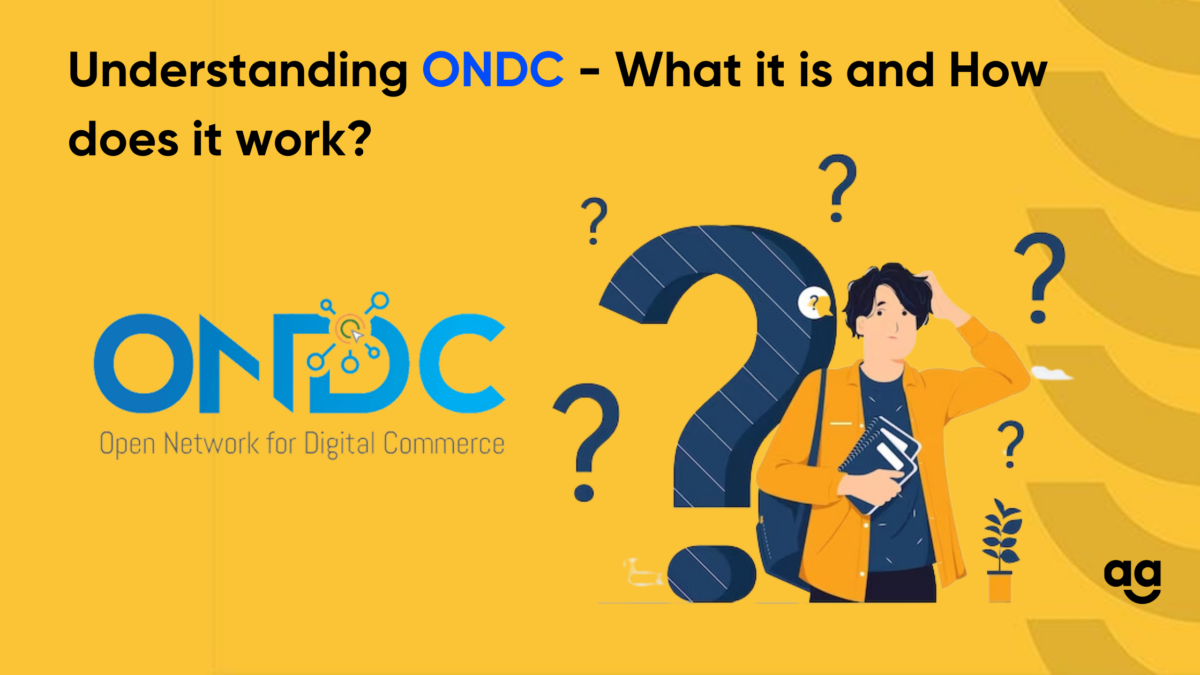Introduction
Just as the introduction of UPI impacted the payment ecosystem in India, Open Network for Digital Commerce (ONDC) is on track to shape and shake up India’s logistics sector.
ONDC is the new buzzword that has taken the business world by storm and piqued everybody’s curiosities. But what exactly is ONDC? Before diving into it, let us first debunk some common myths surrounding it.
Is ONDC an application? No.
Is ONDC a website? No.
Is ONDC not eCommerce aggregator? No.
What is ONDC?
Open Network for Digital Commerce (ONDC) is an open network that was launched in 2022, with the aim to enhance accessibility and expansion in e-commerce by democratizing the eCommerce market.
The ultimate goal of the platform is to offer offline, small-time retailers, local kiranas, and shops a chance to compete against the e-commerce monolithic giants such as Amazon or Flipkart. Similar to the UPI (Unified Payments Interface) system, ONDC is a digital infrastructure. Since ONDC is a set of protocols, it is designed and developed to help these hyperlocal vendors by offering them a digital space for their stores so buyers can directly buy from them.
At present, most retailers in India sell their products online via one of the big tech giants, and pay them hefty platform charges. Now, with ONDC, the seller has access to digital space which is also accessible by buyers via certain digital applications such as Paytm, Mystore, Craftsvilla and more that are registered as buyer applications on the ONDC network.
Doesn’t it sound quite similar to UPI (Unified Payments Interface), where you can transact on any application such as PhonePe, Paytm, etc and the sellers receive the money via UPI applications?
This brings up another pertinent question – will there be costs associated with using the ONDC network?
The answer is yes. However, the cost will be far less (approximately 90% less) than what sellers currently pay to other online marketplaces.
ONDC is re-inventing eCommerce to create a level playing field for online and offline players in the market and especially loosen the grip of the eCommerce giants.
How Does ONDC Work?
Before understanding how ONDC works, here’s a quick recap of how things work currently.
In a transaction, a buyer gets an option to select only specific products that are listed on the given application they are using. Normally, there are 3 stages of transactions:
- Product Catalogues
- Order Payment
- Delivery of Order
All of these stages are handled by the marketplace/application/selling platform and the customer has limited access.
Now, with ONDC, all the 3 stages are independent. Furthermore, customers will get an option to select products from any seller and choose any delivery partner. Not just that, they also get an option to make payments via UPI.
Let’s take an example here.
A buyer wants to purchase tea and searches for it on the ONDC Apps. The moment he looks for a product, the request is sent across the ONDC network where multiple seller apps are associated and gets a response that is then sent to the buyer app.
Note: Any seller or merchant must be registered with a seller app that is registered with ONDC to be a part of the network, alternately any seller/ merchant or brand can also come onboard ONDC directly.
The order is then handled by the seller app and if the particular seller does not have a delivery system in place, ONDC solves that problem too. Logistics service providers too can register with the ONDC and sellers can select a suitable and reliable delivery partner from the list. ONDC would also have records of historical performance record of the solution providers, which would make taking an informed decision easier. Finally, at checkout, the buyer can select any UPI application to complete the payment.
Hence, what happens is that the buyer purchases the given product from a buyer app and the seller is associated with a different app. On the other hand, in the current scenario, the sellers are listed on a platform and the buyer has to buy from the same platform itself.
To simplify it, with ONDC, any buyer can buy any product from an application from any seller who sells using any application. It not only reduces digital marketplace monopoly, but also puts the customer at the epicentre of transactions.
ONDC will revolutionize the Indian e-commerce scene with digital exposure to local vendors and delivery partners. With so many sellers available and accessible from a single platform customers will have more choices not only in buying but in delivery too.
ONDC – Looking Ahead
Implementing such a paradigm shift from marketplace driven models to a facilitator driven interoperable decentralized network calls for:
- Encouraging widespread participation from small and medium sized enterprises, especially hyperlocal vendors across India.
- Nurturing trust and enabling discoverability across all platforms.
- Overcoming challenges of the platform centric model by unifying isolated platforms, instead of just pushing the concept of one universal platform.
- Align the benefits and incentives of an interoperable decentralized network for sellers, buyers, and all other players involved.
- Enable the autonomy of the sellers and buyers.
Wrapping Up
As per statistics, the number of digital buyers in India is set to cross the 380 million mark in 2025 from 289 million in 2021. The nature and integrated system of ONDC is set to aid small retailers and merchants in catering to these growing numbers of digital buyers. Thus, promoting not just e-commerce but the logistics sector as well.
Using the ONDC network, companies will be able to tap into the growing rural markets across India. With ONDC protocols, business owners will get a level playing field with existing e-commerce giants while also expanding their business online.
ONDC is set to democratize India’s e-commerce markets for buyers, sellers, and logistics businesses alike, across the country.







 Shipping
Shipping







